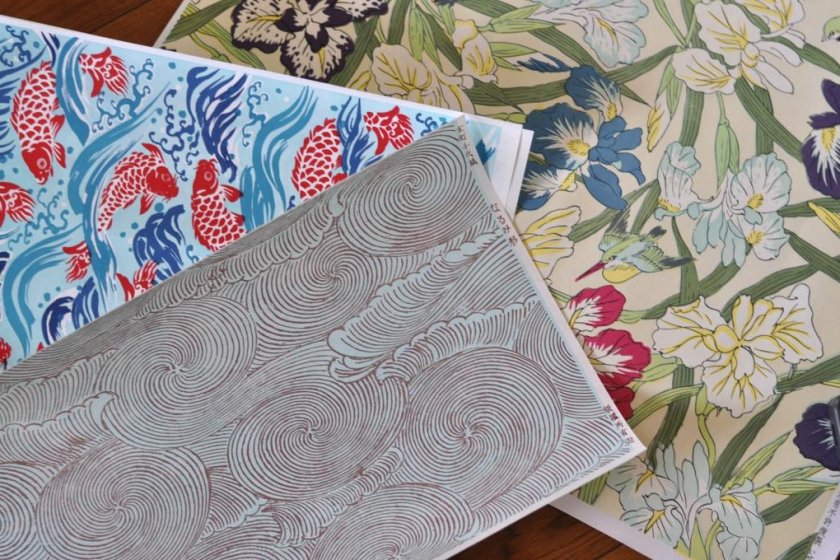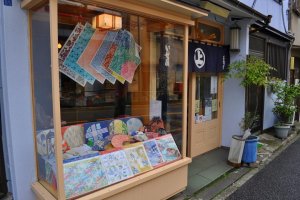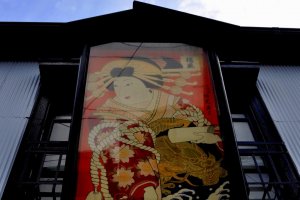Walking around the old-fashioned suburbs of Yanaka, I was a bit in a daze. There isn’t anything flashy or particularly eye-catching about this area, like you might find in the neon signs of Akihabara for instance. But there’s something about the small town main street vibe that this part of town gives off that I absolutely love.
At first glance, the exterior of Isetatsu doesn’t seem to be any different from the residences that surround it, except for the intricately designed portrait of a woman in a traditional robe above the door. I stopped to take a photo of the portrait, but that was before my sister—a going-on-four-year resident of Japan—pointed out that it was indeed the traditional color woodblock print store.
Isetatsu was originally founded in 1864 in Iwamotocho. The owners—currently in their fifth generation of printmakers—used Edo period patterns typically found on traditional fabric and printed them on chiyogami paper. It was very popular with women in children, as the paper was used for paper dolls and toys.
The process includes three people: a painter, a carver and an imprinter. A picture is painted and the carver cuts out the image on wood blocks, with varying blocks for various layers of the painting. The imprinter places colored ink on different parts of the wood block, places the chiyogami paper face down on the woodblock and rubs the ink into the paper. The imprinter’s process is repeated many times.
After time, chiyogami transformed into an art form much like ukiyo-e. The famous painting entitled “The Great Wave off Kanagawa” by Hokusai was created in the ukiyo-e style.
Isetatsu is also a part of Toto Norenkai, an association of 53 members hoping to preserve tradition of each of their crafts while also inspiring fortification of these crafts in modern times. Members must have been in operation for at least three generations and over 100 years.
Each of the prints made at Isetatsu is still created with traditional woodblock printing methods and they are never mass-produced by machine. I find it incredible and marvelous to know that, in such a technologically advanced place such as Japan, long-running traditions can maintain without the eventuality of automation.
Isetatsu has souvenirs for everyone. There are many framed traditional prints of geishas and Japanese landscapes, and located at the back of the store are shelves full of chiyogami with brightly colored Edo patterns. If you look through the drawers of prints near the cash register, you might find zanier pieces such as one of sumo cats and cat spectators. Interestingly enough, the design of the cats was kept in the Edo style. There are also fans, stationary, papier-mâché animals, greeting cards, mobiles, good luck charms and more.
The store also offers online purchases (in Japanese) with credit card or cash on delivery if you find that you can’t make it into the Yanaka, Sendagi, or Yokohama stores during your stay. In either case, you are able to enjoy these beautiful pieces of Japanese art.






























